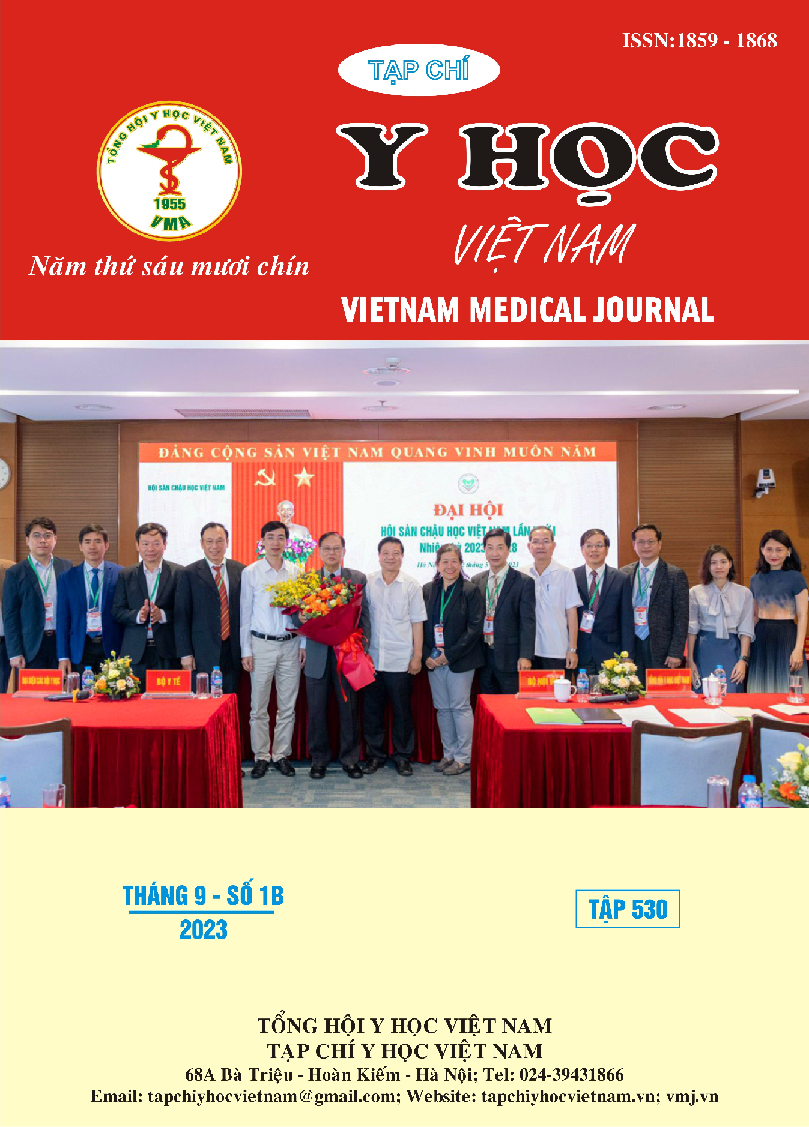EFFICACY OF HELMET-NON-INVASIVE VENTILATION ON PATIENTS WITH ACUTE RESPIRATORY FAILURE
Main Article Content
Abstract
Objectives: The Helmet-NIV was first approach in 1990s in Chicago, then became more popular in COVID-19, this study was conducted to evaluate the effectiveness of non-invasive ventilation with helmet system on patients with acute respiratory failure. Method: a prospective interventional study, data was collected on all patients diagnosed with acute respiratory failure in mild and hard degree who were on Helmet NIV during the period from June 2022 to June 2023. Clinical indicators and blood gases were evaluated before and after Helmet-NIV. Results: A 30-patients study with the ratio male/female 2:1, mean age: 67,7±12,805; the common classfication of age is 60-80 years old. The most common cause of acute respiratory failure was pneumonia (23,3%), followed by acute pulmonary edema (30%) and COPD exacerbations (23,3%). 56,7% of patients had underlying disease and 46,7% of patients had acute onset of disease; 63,3% patients with severe respiratory failure. The success rate with helmet NIV was 33,3% (10/20 patients). Helmet NIV was effective in improveing aterial blood gas parameters after 24 hours of intervention, specifically: pH (7,344 versus 7,465), PaO2(74,15 versus 122), PaCO2 (39 versus 45,5), P/F ratio (179,2 versus 322,8). There were statisticlly significant (p<0,05). Conclusion: Helmet NIV is effective in improving aterial blood gas parameters in patients with pulmonary edema, the effective of Helmet-NIV in patients with COPD and pneuminia is not obivious
Article Details
Keywords
respiratory failure, non invasive ventilatin, helmet – noninvasive ventilation, helmet-cpap system.
References
2. Hong S., Wang H., Tian Y. và cộng sự. (2021). The roles of noninvasive mechanical ventilation with helmet in patients with acute respiratory failure: A systematic review and meta-analysis. PLoS ONE, 16(4), e0250063.
3. Vo Viet H., Nguyen Van M., và Tran Xuan T. (2018). THE EARLY USE OF NON-INVASIVE VENTILATION FOR ACUTE RESPIRATORY FAILURE IN ICU. JMP, 8(4), 23–27.
4. Phan Thị Lan Hương (2020). Áp dụng bảng iểm HACOR trong dự đoán kết quả thành công của thở máy không xâm nhập trên bệnh nhân suy hô hấp cấp.
5. Pisani L., Mega C., Vaschetto R. và cộng sự. (2015). Oronasal mask versus helmet in acute hypercapnic respiratory failure. Eur Respir J, 45(3), 691–699.
6. Grieco D.L., Menga L.S., Cesarano M. và cộng sự. (2021). Effect of Helmet Noninvasive Ventilation vs High-Flow Nasal Oxygen on Days Free of Respiratory Support in Patients With COVID-19 and Moderate to Severe Hypoxemic Respiratory Failure: The HENIVOT Randomized Clinical Trial. JAMA, 325(17), 1731.
7. Patel B.K., Wolfe K.S., Pohlman A.S. và cộng sự. (2016). Effect of Noninvasive Ventilation Delivered by Helmet vs Face Mask on the Rate of Endotracheal Intubation in Patients With Acute Respiratory Distress Syndrome: A Randomized Clinical Trial. JAMA, 315(22), 2435.
8. Arabi Y.M., Tlayjeh H., Aldekhyl S. và cộng sự. (2021). Helmet Non-Invasive Ventilation for COVID-19 Patients (Helmet-COVID): study protocol for a multicentre randomised controlled trial. BMJ Open, 11(8), e052169.


